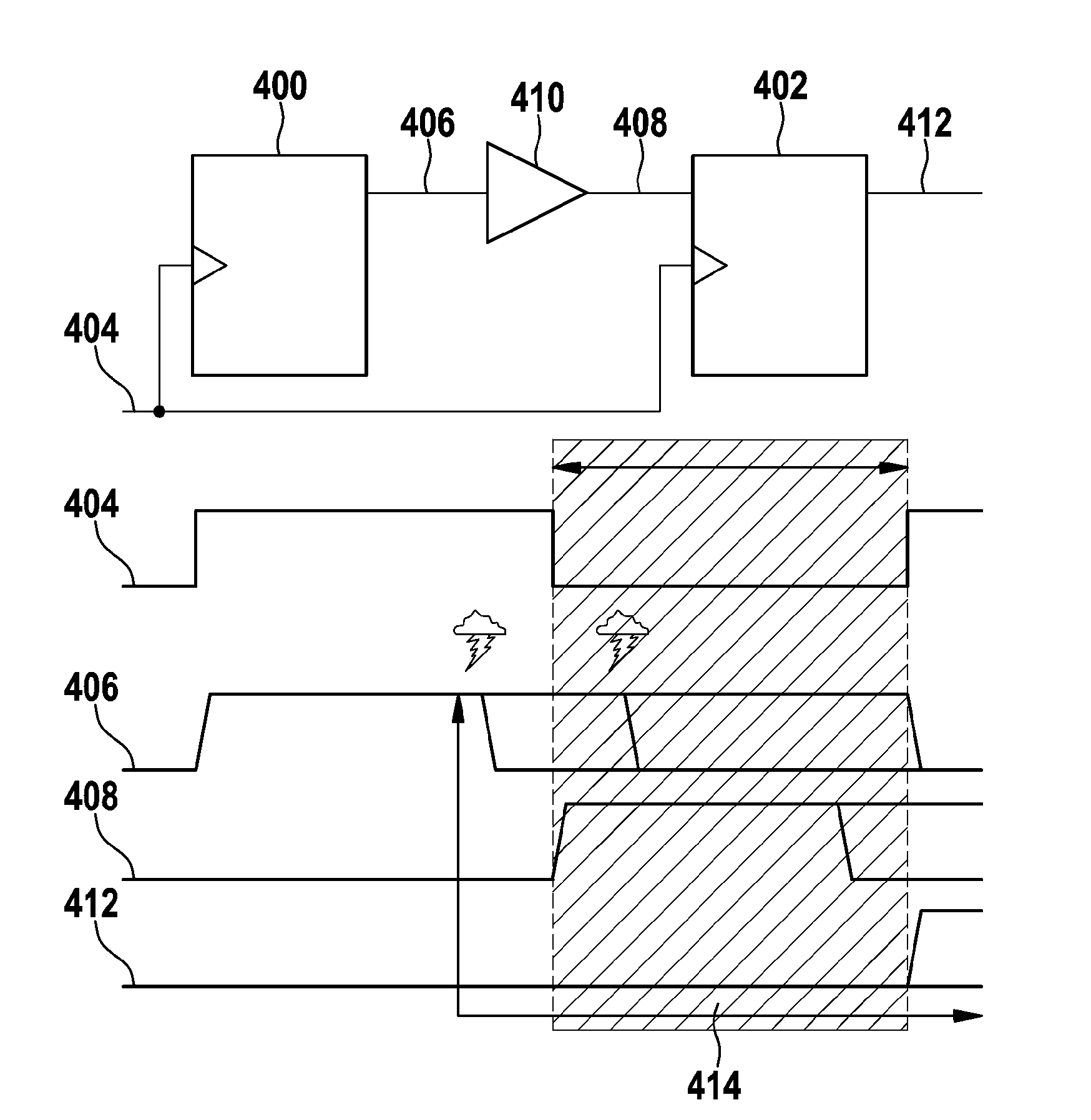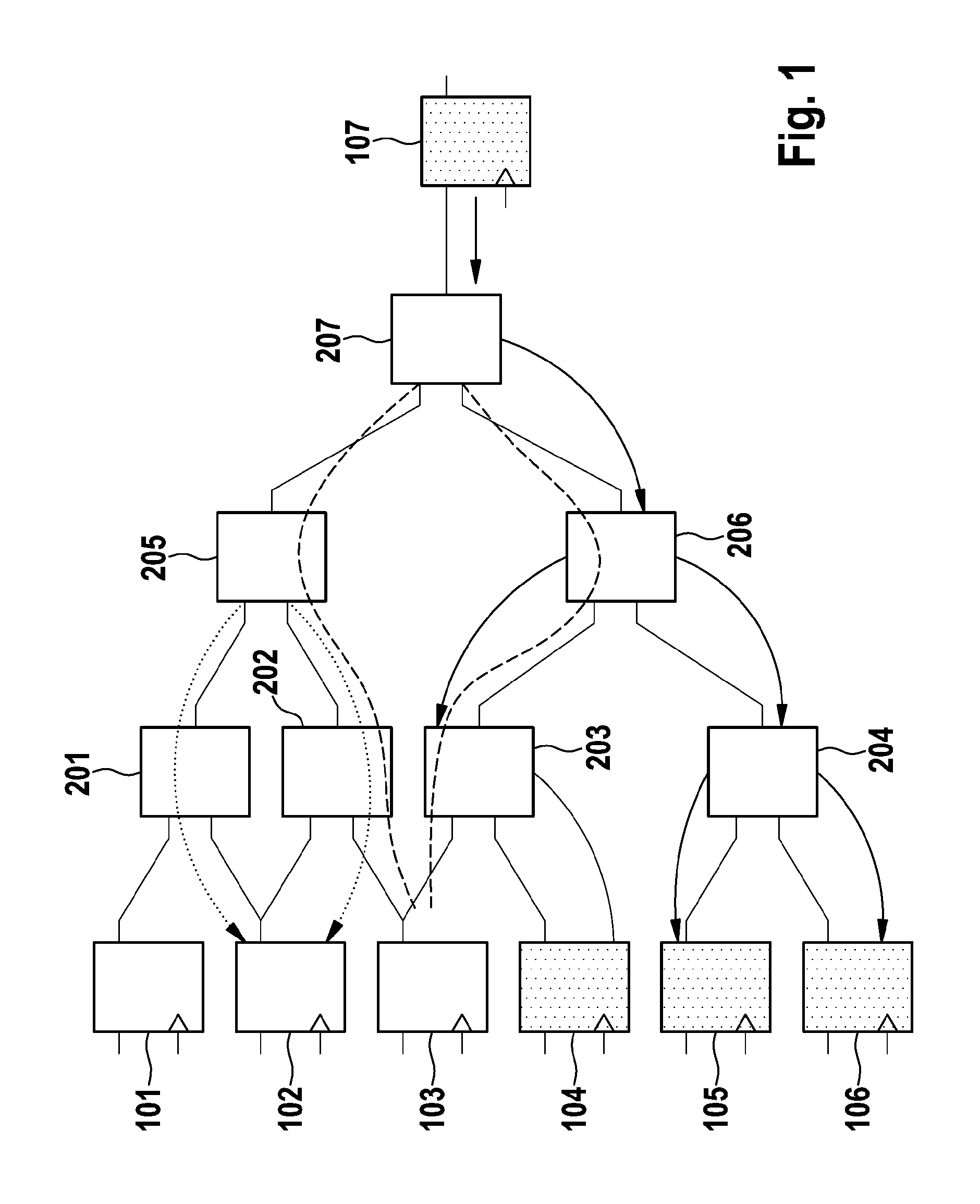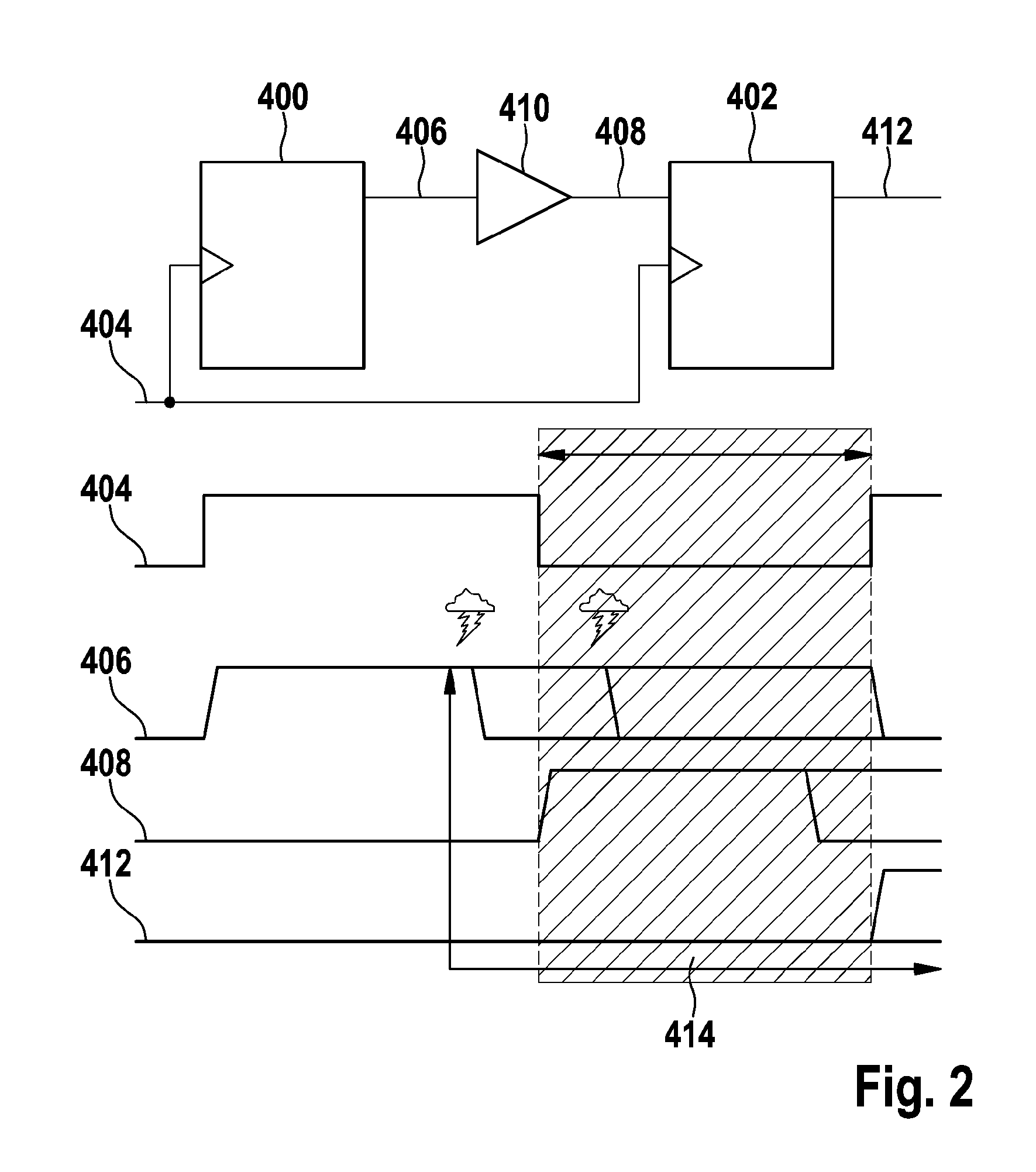Backward analysis for determining fault masking factors
a technology of fault masking factor and backward analysis, applied in the direction of pulse manipulation, pulse technique, instruments, etc., can solve the problems of systemic faulty behavior, faulty behavior can also be triggered, and the behavior of the user cannot be determined without a lot of effort, so as to achieve the effect of easy determination of the circuit sta
- Summary
- Abstract
- Description
- Claims
- Application Information
AI Technical Summary
Benefits of technology
Problems solved by technology
Method used
Image
Examples
Embodiment Construction
[0072]The present invention is schematically shown in the drawings on the basis of specific embodiments, and is described in detail with reference to the drawings.
[0073]FIG. 1 shows a sensitive path from an input to an output, in which a change of the input signal causes a change in the output signal.
[0074]The figure schematically shows how sensitive paths go out from a register, as an example of a storage element. It is assumed that the occupation of registers 101 through 106 by the output signals is such as to bring about the sensitive paths (solid arrows) assumed below. The function of logic blocks 201 through 207 is not specified in more detail.
[0075]Going out from register 107, there result sensitive paths via logic gates 207, 206, 203 to register 104, and via 207, 206, 204 to registers 105 and 106. There is no sensitive path to register 101. Registers 102 and 103 are situated in particular structures. Both registers are the beginning of a reconvergent path. Two possible situat...
PUM
 Login to View More
Login to View More Abstract
Description
Claims
Application Information
 Login to View More
Login to View More - R&D
- Intellectual Property
- Life Sciences
- Materials
- Tech Scout
- Unparalleled Data Quality
- Higher Quality Content
- 60% Fewer Hallucinations
Browse by: Latest US Patents, China's latest patents, Technical Efficacy Thesaurus, Application Domain, Technology Topic, Popular Technical Reports.
© 2025 PatSnap. All rights reserved.Legal|Privacy policy|Modern Slavery Act Transparency Statement|Sitemap|About US| Contact US: help@patsnap.com



